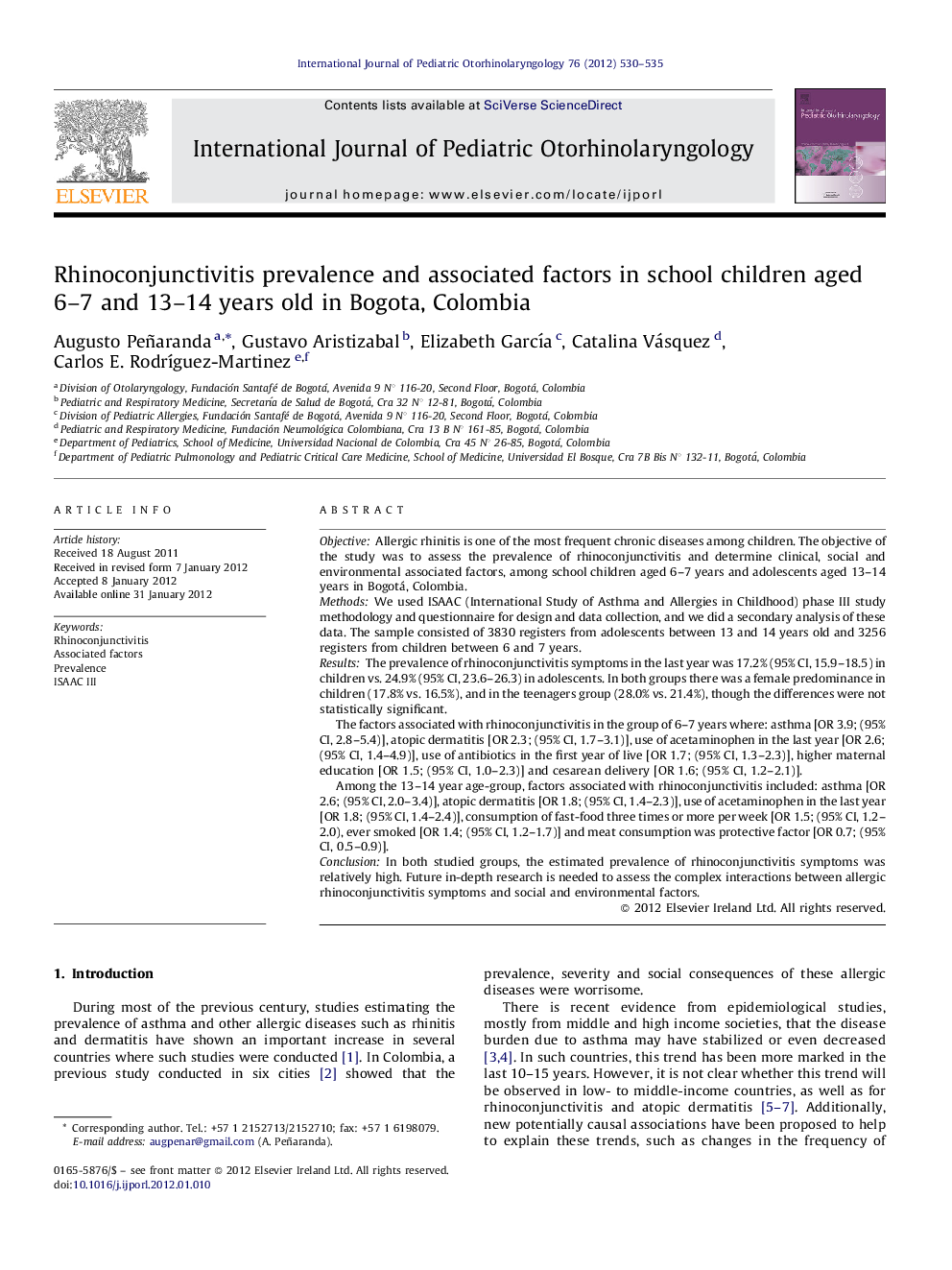| Article ID | Journal | Published Year | Pages | File Type |
|---|---|---|---|---|
| 4112972 | International Journal of Pediatric Otorhinolaryngology | 2012 | 6 Pages |
ObjectiveAllergic rhinitis is one of the most frequent chronic diseases among children. The objective of the study was to assess the prevalence of rhinoconjunctivitis and determine clinical, social and environmental associated factors, among school children aged 6–7 years and adolescents aged 13–14 years in Bogotá, Colombia.MethodsWe used ISAAC (International Study of Asthma and Allergies in Childhood) phase III study methodology and questionnaire for design and data collection, and we did a secondary analysis of these data. The sample consisted of 3830 registers from adolescents between 13 and 14 years old and 3256 registers from children between 6 and 7 years.ResultsThe prevalence of rhinoconjunctivitis symptoms in the last year was 17.2% (95% CI, 15.9–18.5) in children vs. 24.9% (95% CI, 23.6–26.3) in adolescents. In both groups there was a female predominance in children (17.8% vs. 16.5%), and in the teenagers group (28.0% vs. 21.4%), though the differences were not statistically significant.The factors associated with rhinoconjunctivitis in the group of 6–7 years where: asthma [OR 3.9; (95% CI, 2.8–5.4)], atopic dermatitis [OR 2.3; (95% CI, 1.7–3.1)], use of acetaminophen in the last year [OR 2.6; (95% CI, 1.4–4.9)], use of antibiotics in the first year of live [OR 1.7; (95% CI, 1.3–2.3)], higher maternal education [OR 1.5; (95% CI, 1.0–2.3)] and cesarean delivery [OR 1.6; (95% CI, 1.2–2.1)].Among the 13–14 year age-group, factors associated with rhinoconjunctivitis included: asthma [OR 2.6; (95% CI, 2.0–3.4)], atopic dermatitis [OR 1.8; (95% CI, 1.4–2.3)], use of acetaminophen in the last year [OR 1.8; (95% CI, 1.4–2.4)], consumption of fast-food three times or more per week [OR 1.5; (95% CI, 1.2–2.0), ever smoked [OR 1.4; (95% CI, 1.2–1.7)] and meat consumption was protective factor [OR 0.7; (95% CI, 0.5–0.9)].ConclusionIn both studied groups, the estimated prevalence of rhinoconjunctivitis symptoms was relatively high. Future in-depth research is needed to assess the complex interactions between allergic rhinoconjunctivitis symptoms and social and environmental factors.
